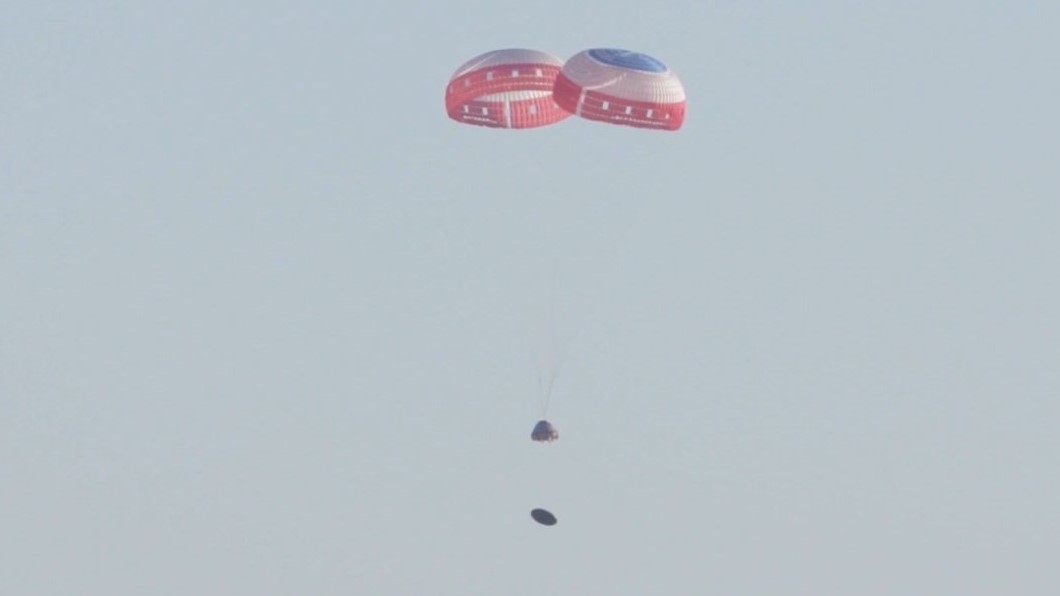
For SpaceUpClose.com & RocketSTEM
CAPE CANAVERAL, FL – A missing pin connecting lines between a pilot parachute and a main parachute caused the clearly visible failure of the 3rd parachute to deploy from Boeing’s Starliner space taxi during the Pad Abort Test with a test version of the vehicle this week on Monday, Nov. 4 – a critical test of the emergency abort system that was otherwise fully successful, Boeing officials said at a media briefing today Nov. 7.
The “lack of secure connection between the pilot chute and the main chute lanyard” was the “root cause” of the non-deployment of one of the three main parachutes from the Starliner capsule during the Nov. 4 Pad Abort Test, Boeing’s John Mulholland and commercial crew vice president confirmed during a Nov. 7 media conference call with reporters, including Space UpClose.
The lack of the connecting pin meant that the pilot chute could not pull the main chute out along the riser – as designed.
The purpose of the Pad Abort Test is to demonstrate the spacecraft’s ability to quickly separate from the rocket and escape the launch pad and save the astronauts lives in a split second in the event of a catastrophic rocket emergency on the launch pad on launch day.
Starliner fired off a test stand in White Sands Missile Range, New Mexico on Nov. 4 on the critical Pad Abort Test in support of NASA’s Commercial Crew Program to ferry our astronauts to the International Space Station (ISS) and restore America’s ability to launch humans to Earth orbit.
“The spacecraft performance, the test team performance, was outstanding,” said John Mulholland, Boeing commercial crew vice president and Starliner program manager, during a Nov. 7 media conference call with reporters, including Space UpClose.
The test began at 9:15 a.m. EST (7:15 a.m. MST) with ignition of the vehicle’s four launch abort engines known as LAEs and several orbital maneuvering and attitude control system engines known as OMACs that pushed the spacecraft away from the stand with a combined 160,000 pounds of thrust.
“The vehicle trajectory that it flew was right on top of pre-test predictions. The abort engine burn was nominal, the startup was good, the shutdown was good.”
“The forward heat shield, the ascent cover, the service module, and the heat shield and the airbag deployment and operation were all nominal,” Mulholland explained. “So was an outstanding success for the spacecraft and the test team.”
“The root cause was a lack of secure connection between the pilot chute and the main chute lanyard.”
“By design, the pilot parachute fires out through a mortar, and once that pilot parachute inflates, it actually pulls the main parachute out. But that lack of adequate connection didn’t allow the pilot parachute to pull out the main parachute.”
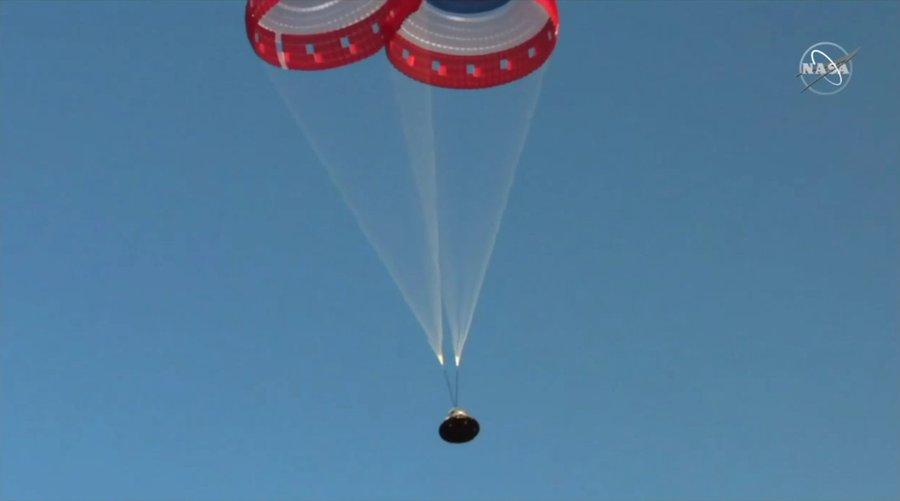
The lack of a connecting pin can be traced to human error and was uncovered by a thorough review of pre-test imagery taken “during ‘close-out’ operations,” Mulholland noted.
Easily implemented parachute installation and packing procedures will be changed as result.
Mulholland further said it was visually difficult to determine if the pin was in place during final pre-test inspections.
“The pilot chute has a Kevlar riser with a loop at the end of it,” Mulholland said.
“The linkage is a pin, so a pin would normally be inserted into that loop and secured. That linkage and the pilot parachute riser are enclosed in a sheath, a protective sheath that prevents abrasion. So it’s very difficult, when you’re connecting that, to verify visually that it’s secured properly.”
“In this particular case, that pin wasn’t through the loop, but it wasn’t discovered in initial visual inspection because of that protective sheath. It was subsequently determined by both detailed close-out photos and then, obviously, when we recovered the hardware in the field, were able to conclusively tie those two pieces together.”
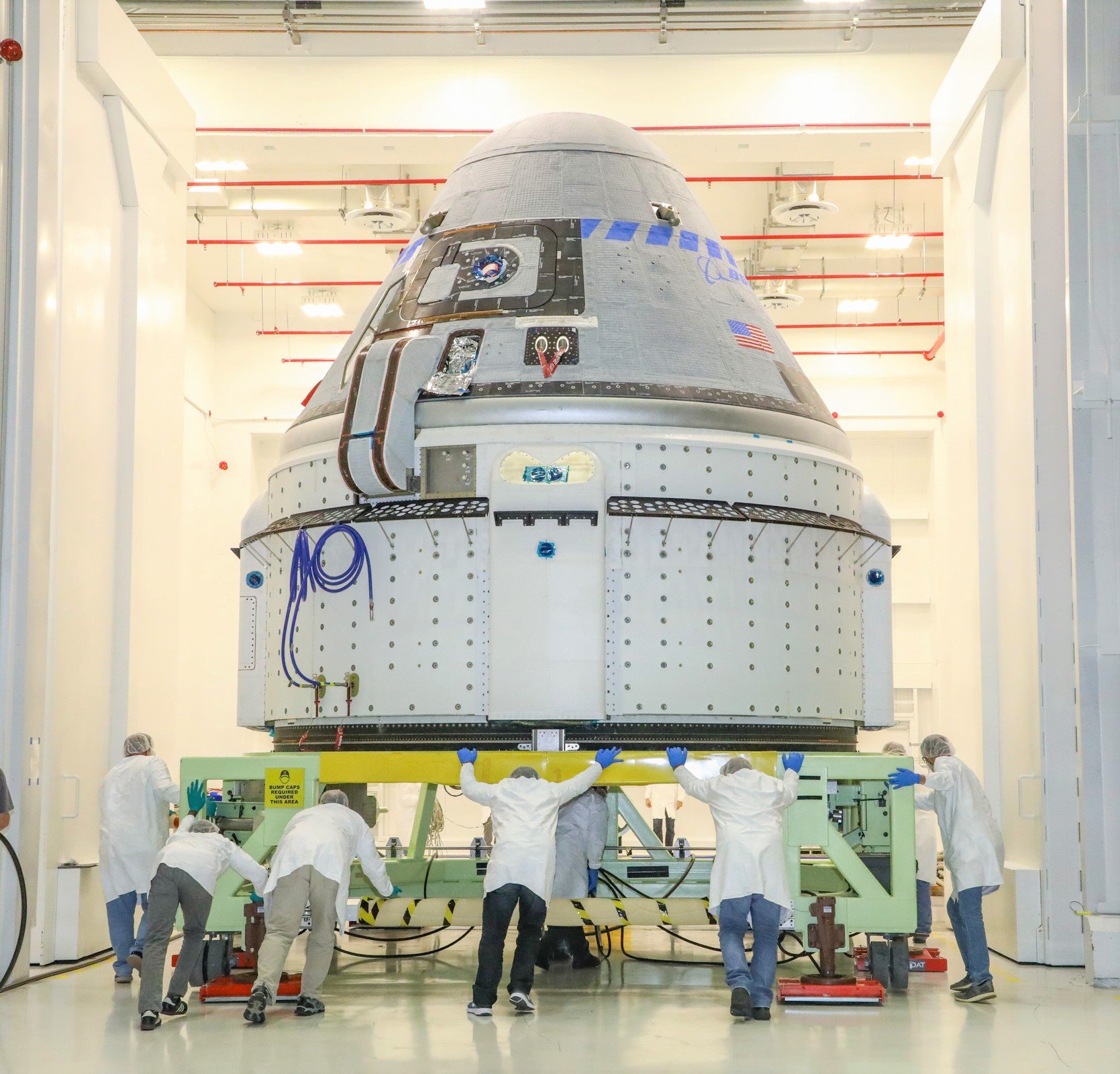
As a result of the deployment failure Boeing technicians have gone back and begun to recheck all the parachute pin link connections on the Starliner vehicle at the Kennedy Space Center manufacturing facility where it is undergoing final preparations for the upcoming Starliner Orbital Flight Test (OFT) test flight in mid-December.
So far 18 of 21 pin linkage connections were checked out and properly installed, Mulholland stated.
Watch this new Boeing video of the Pad Abort Test:
Video Caption: Boeing performs crew capsule abort test: Boeing launched a Starliner crew capsule on a mile-high test flight Nov. 4, 2019 over the U.S. Army’s White Sands Missile Range in New Mexico. The abort test verified the performance of the capsule’s emergency escape rockets before launching astronauts into space. Credit: Boeing
This was Boeing’s first flight test as part of NASA’s Commercial Crew Program and will help evaluate the performance of the abort system prior to missions to the International Space Station with a crew onboard.
Listen to the post test comments from Crew Flight Test (CFT) crew member Chris Ferguson, NASA astronaut/shuttle commander & Boeing test pilot here:
Hear @Astro_Ferg talk to @WSMissileRange about the importance of their proving ground in our pad abort + other vital testing and get his insight, from the perspective of a veteran astronaut who will fly on #Starliner.
🎥 via WSMR pic.twitter.com/ZsR2ym7zwE— Boeing Space (@BoeingSpace) November 7, 2019
Meanwhile both Boeing and NASA said that the launch of Boeing’s Starliner spacecraft on the Orbital Flight Test (OFT) mission on a United Launch Alliance (ULA) Atlas V rocket remains on target for Dec. 17 from Space Launch Complex 41 at Cape Canaveral Air Force Station (CCAFS) in Florida.
Furthermore ULA is stacking the Atlas V rocket at pad 41.
No astronauts will be flying aboard the mission dubbed OFT since its serving as a proving ground to test out all the spacecraft systems and ensure its safe to fly our precious human astronauts.
The Boeing Starliner uncrewed OFT launch with no astronauts aboard will serve as a full dress rehearsal test flight to the ISS and back – lasting about a week overall.
If all goes well with OFT then NASA and Boeing will work towards launch of the first Starliner mission with astronauts aboard on the CFT or Crew Flight Test mission – that could blastoff as soon as Spring 2020.
The Starliner test stand was built for and preciously used by the Orion deep space capsule team for a similarly purposed Pad Abort test flight carried out in 2010.
Watch my commentary at Fox 35 TV News Orlando on Nov. 4 about the outcome of the Pad Abort Test:
https://www.fox35orlando.com/news/boeing-capsule-abort-test-successful-despite-third-parachute-gaffe
The goal of the Commercial Crew Program is to end our 100% reliance on the Russian Soyuz capsule for launches to the ISS at a cost of more than $80 million per astronaut seat.
Starliner is being manufactured by Boeing at the Kennedy Space Center nearby the Vehicle Assembly Building in the Commercial Crew and Cargo Processing Facility (C3PF) facility formerly used to process NASA’s space shuttles.
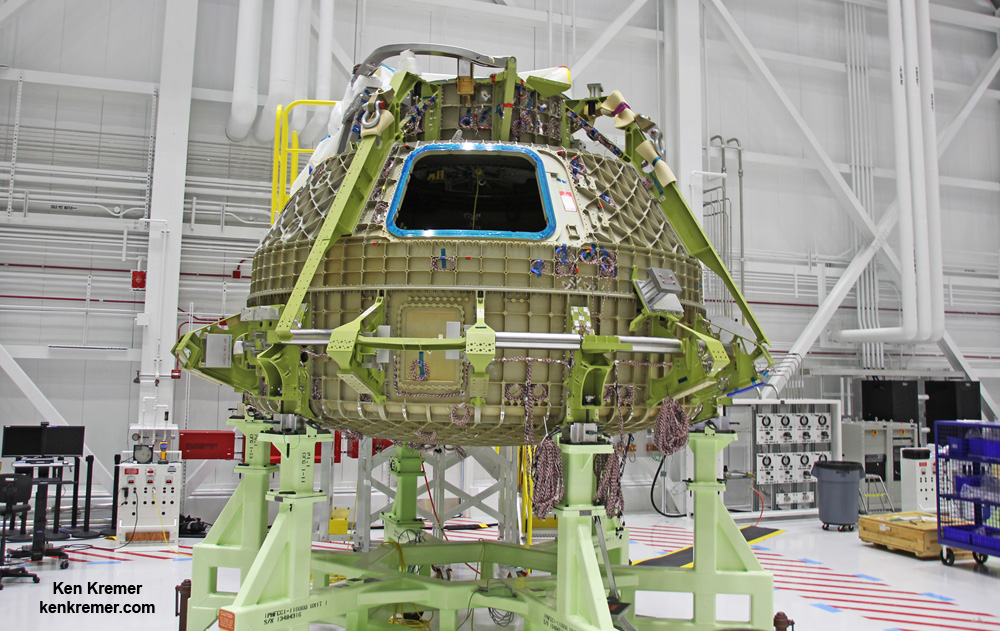
The Boeing Starliner commercial crew vehicle will launch on a ULA Atlas V rocket augmented with two solid rocket boosters on astronaut ferry flight to and from the ISS for NASA.
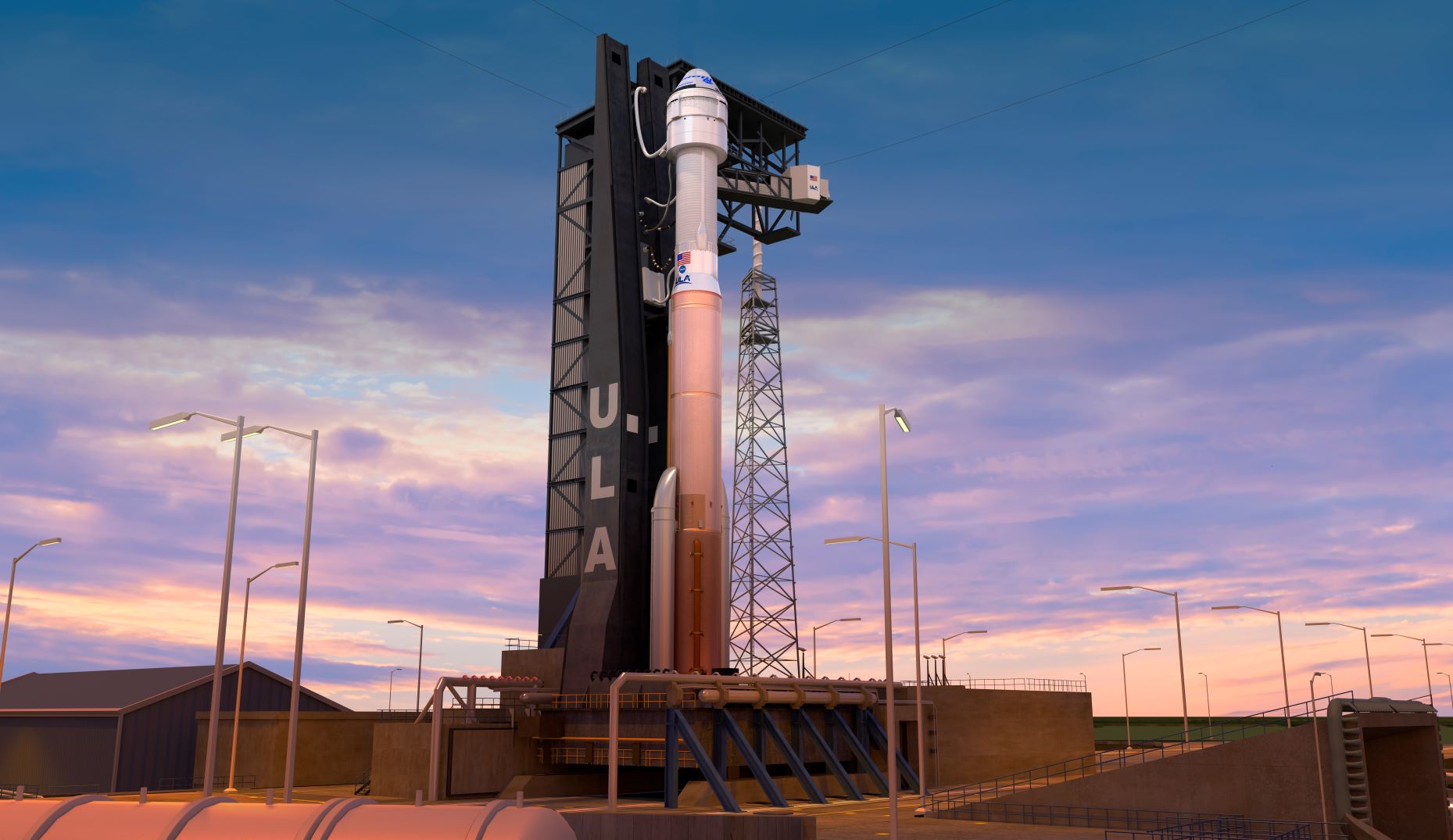
Stay tuned here for Ken’s continuing Earth and Planetary science and human spaceflight news: www.kenkremer.com –www.spaceupclose.com – twitter @ken_kremer – email: ken at kenkremer.com
Dr. Kremer is a research scientist and journalist based in the KSC area, active in outreach and interviewed regularly on TV and radio about space topics.
………….
Ken’s photos are for sale and he is available for lectures and outreach events
Ken’s upcoming outreach events:
Nov 10: 7 PM, Quality Inn Kennedy Space Center, Titusville, FL. “SpaceX Starlink Launch”
Nov 23, 1 PM, Titusville, FL: “50th Anniversary Apollo 12 and NASA Return to the Moon with Project Artemis” at American Space Museum, Titusville, FL. Lecture free. Open to the public.
Website: www.spacewalkoffame.org
spacewalkoffame.org/event/cosmic-christmas-yard-sale-and-apollo12-50th



